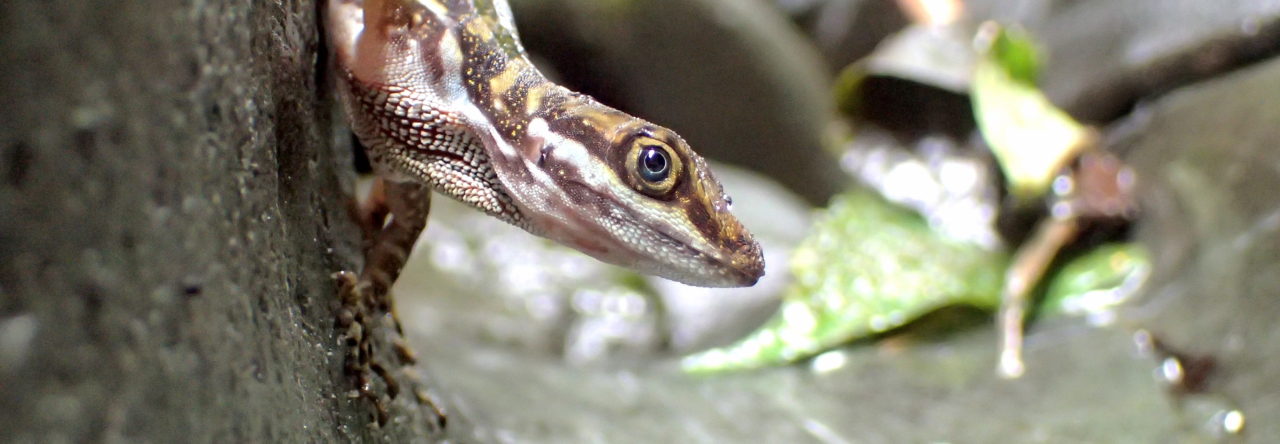The sequencing of the genome of the green anole (Anolis carolinensis) is a landmark in the age of genomics, and a highpoint in the annals of anole studies. It is the first complete genome sequence of a reptile, and a great step forward in the development of comparative genomics. Results are already coming in: Matthew Fujita, Scott Edwards and Chris Ponting have a paper in press in Genome Biology and Evolution, using an earlier release of the anole genome, showing that the green anole genome lacks the large guanine-cytosine rich regions (called isochores) that are characteristic of birds and mammals. Is this lack unique to the green anole, or a feature of some larger group? We don’t know, of course, because the green anole is the first non-avian/non-mammalian amniote to be sequenced, but it is a hint of new things to come. As Rich Glor put it in his commentary here at Anole Annals,
Fujita et al.’s work is a good example of the insight offered by comparative genome sequencing; as the number of available genomes expands, this work is sure to continue to challenge overly simplistic assumptions about genome architecture and evolution derived from biased sampling of the tree of life.

Green Anole, Anolis carolinensis, New Orleans, LA. Note the expanded subdigital toepads.
So why was an anole chosen to be the first reptile sequenced? The short answer is that, among a small group of candidate species of reptiles announced by the NIH in May of 2005, the response of the biological community favored the green anole over the garter snake. But the longer answer includes why the community preferred the green anole: it has long been the subject of diverse physiological, behavioral, ecological, and other studies (a “model” organism in the functional biology sense), and, more importantly, anoles in general have been favored and favorable materials for a diverse array of physiological, behavioral, ecological, evolutionary, and zoogeographic studies over many decades. The goal of this post is to review a bit of the rich history of anole studies to provide some background on why so many researchers have found anoles to be vastly interesting animals.
Read More












